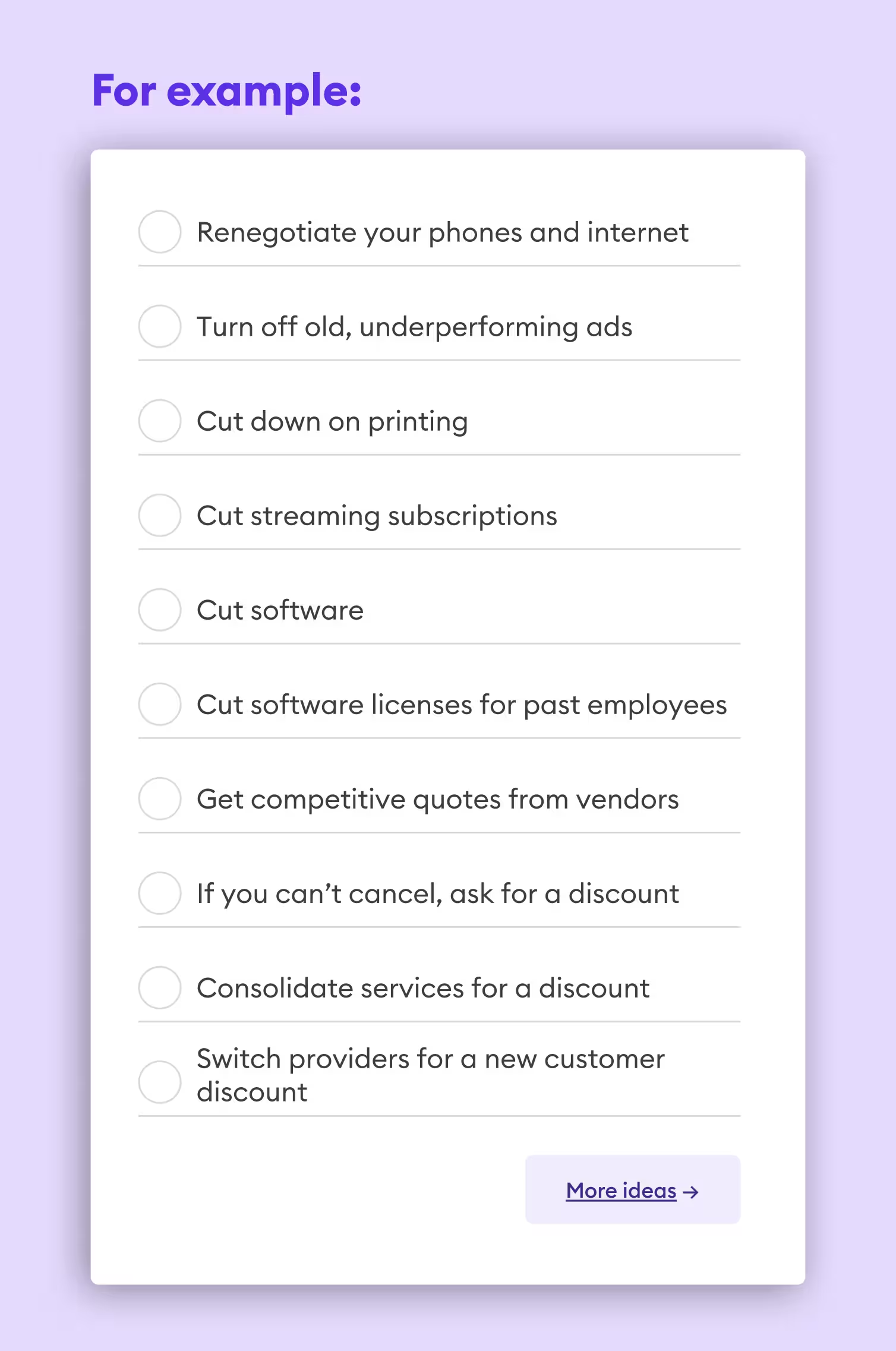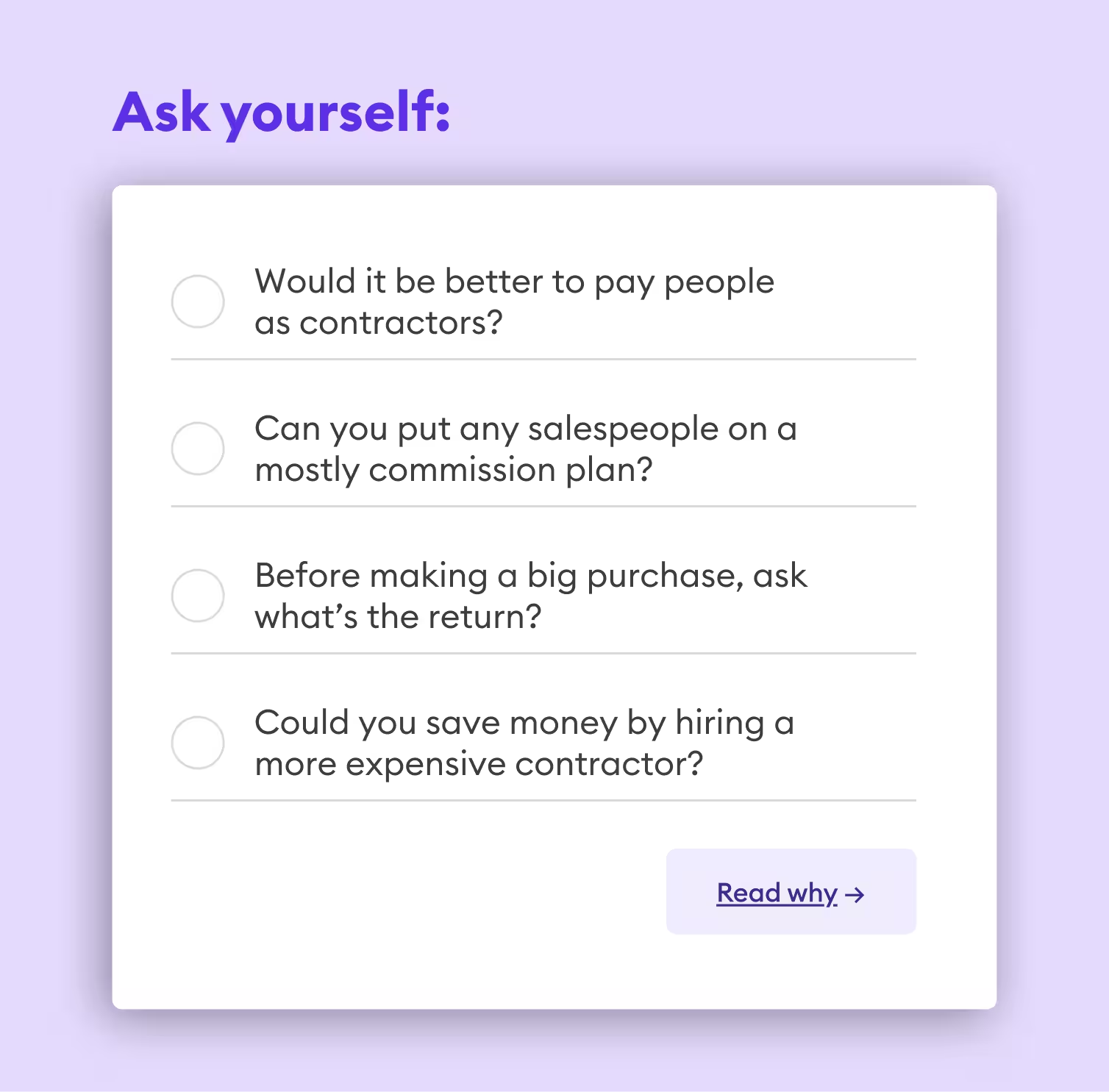The Growth Season Challenge—Activity 4: Spend less
.jpg)
Total time: 10 minutes
Portia is a genius at getting sh*t done. While her ecommerce competitors are sleeping on trends, she’s thinking up graphic tee slogans. While others test basic ads, she’s doing advanced retargeting. Her drop-shipping integrations are the envy of all.
Last year she broke $2 million. But she didn’t take much of it home. She still carries debt from the last holidays, and while her revenue is up, her expenses are too.
Suddenly her friends announce a vacation to Greece and she’s feeling left out because she can’t afford it. She has to tend to the online store. She suddenly feels tired. And wonders, with all this money, why don’t I feel any freer?
Portia’s business has an expenses issue
Recall our last activity, where we met the recruiter who couldn’t bring herself to charge enough? Portia has the opposite problem. She is great about asking what she’s worth, negotiating, and collecting. But in the end, she’s barely making more than Dee the recruiter.
We don’t have to tell you this, but there are two ways to grow your revenue:

Let’s take a closer look at Portia’s operation.
Her several ecommerce stores are run by loads of software to sync inventory, update Google Ads, and send emails. All those subscriptions seem small. But a recurring $14 here and $25 there add up to thousands per month.
Further, Portia is paying lots of little percentages on every transaction: 7% percent for warehousing, 2.9% for payments, 1.4% for insurance. Every sale is actually a lot less.
The result is Portia’s margins are actually much lower than she thinks.
And to be honest, this is a great place to be! She’s done one of the hardest things of all which is to build a business that keeps customers coming back. Huge win. Now all she needs to do is trim.
Cut the nonessentials
Think you can’t cut costs? Think again. Many far larger companies were started with nearly nothing. Costco was founded by a few friends in San Diego. Starbucks was started by two teachers and a writer. Ikea was started by a kid selling pens.
They couldn’t have grown big if they didn’t follow the ancient adage: Always end the day with more money than you started.
You can get by with less. Trust us. Let’s put your CFO hat on and work on the business—it’s your job to cut everything that isn’t essential.
Here’s how.
We call these “No loss cuts”—you won’t miss them. Make a calendar reminder to go through your company’s bank and credit card statements every quarter and snip anything that isn’t essential.
Your number one expense is probably employees, followed by inventory and then professional services. Employees are important and you don’t want to skimp! But you also want to be certain their work is making you money.
Number four seems counterintuitive but it’s true. Sometimes, paying one hour for an expert is cheaper than five for a novice.
And so now, it’s time to take action!
Today’s one action
The hardest part is getting started, especially if expenses make you yawn. Pro tip: If you hate this, delegate it! Doing so could more than pay for itself.
If that saves you a few thousand dollars this year, these cuts could be all the difference between joining your friends on a Grecian vacation or not.
Tomorrow, we talk about how to use money to make money,
The Pilot Team

Would you recommend this course?







